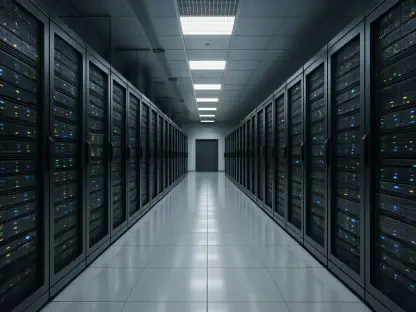Water and electricity suppliers are increasingly vulnerable to potentially devastating cyberattacks, as highlighted by recent reports. With cyberattacks on utilities around the globe becoming more frequent, the threat to critical infrastructure operated by these utilities cannot be overstated. Cybersecurity researchers have provided alarming statistics, revealing that a significant number of water and electricity operators have already been impacted by such cyber threats, leading many to reassess their current security measures and protocols.
Recent Cyberattacks and Their Impact
According to recent research, 62 percent of water and electricity operators in the US and UK have been targeted by cyberattacks within the past year alone. Of these, a striking 80 percent faced multiple attacks, underlining the persistent efforts of cybercriminals. In the UK, Southern Water experienced a significant data breach orchestrated by the hacker group Black Basta. This group effectively infiltrated the company’s server infrastructure, gaining access to and compromising a substantial amount of personal data. Such events underscore the potential for severe disruptions in critical services affecting millions of users.
Nation-state groups are frequently behind these cyberattacks, viewing infrastructure as a means to wield international influence or bolster economic strategies. Nation-state threats to utilities represent a sophisticated and well-resourced adversary whose motivations might range from political leverage to economic destabilization. This situation is exacerbated by the inability of many utilities to detect these threats due to a lack of advanced technology or required expertise. A troubling statistic reveals that over one-third of utilities believed they had not been targeted, though it is likely that many undetected threats were active.
Nation-State Threats to Infrastructure
Cybersecurity experts, such as Simon Hodgkinson, a former Chief Information Security Officer (CISO) at BP, emphasize that utilities are prime targets for nation-states more than for criminal gangs. The adequacy of time and the high level of resources available to these nation-state actors make utilities particularly vulnerable. Hodgkinson points out that such entities see cyberattacks on critical infrastructure as strategic, allowing them to exert leverage or assist their economies under duress. The surge in cybercrime spanning from 2025 to 2027 parallels the introduction of significant trade sanctions and geopolitical tensions.
Hodgkinson further suggests that adopting an “assume-breach” mindset is critical for utilities to swiftly recover from cyberattacks and minimize downtime. Implementing Identity Forensics and Incident Response (IFIR) capabilities provides enhanced operational resilience which is essential to keep identity systems and other critical infrastructure secure. This proactive measure not only addresses the immediate threat but also ensures compliance with stringent regulations, including DORA, GDPR, and NIST, which mandate robust identity protection and fast breach response protocols. By focusing on such measures, utilities can ensure a fortified defense mechanism against evolving threats.
The Role of Advanced Cybersecurity Measures
The comprehensive report titled “The State of Critical Infrastructure Resilience, Evaluating Cyber Threats to Water and Electric Utilities” discovered that around 60 percent of cyberattacks were carried out by nation-state groups. Additionally, 54 percent of the utilities hit by these cyberattacks faced permanent corruption or destruction of their data and systems, a grim reminder of the stakes involved. Identity systems, including Active Directory, Entra ID, and Okta, were compromised in a significant 67 percent of the attacks, with another 15 percent of companies uncertain whether these systems were affected.
Given these vulnerabilities, the importance of introducing advanced cybersecurity measures is paramount. To bolster their defenses, utilities must ensure they identify and protect Tier 0 infrastructure components which are vital for recovery in the event of a cyberattack. These components must be given top priority in incident response and recovery procedures. Following this, attention should cascade to mission-critical (Tier 1) functions, business-critical (Tier 2) functions, and then to all other (Tier 3) functions.
Documenting response and recovery processes and practicing these protocols using real-world scenarios that engage all relevant stakeholders beyond the IT department is necessary. This comprehensive approach ensures that the utility operators are prepared for fast and secure recovery, preventing cyber attackers from maintaining persistence within the environment post-recovery. Implementing solutions that bring together speed, security, and visibility during crisis situations is the need of the hour for these critical services.
Ensuring Future Operational Resilience
To achieve long-term resilience, water and electric utilities must embrace strategies that go beyond mere reactionary measures. Proactive threat identification and mitigation can reduce vulnerability to future cyberattacks. This means not only investing in sophisticated detection technologies but also training personnel extensively to ensure everyone is equipped with the knowledge to recognize and respond to threats effectively.
Collaborative efforts across the industry, alongside governmental support, can create a more unified defense system, promoting information sharing about potential threats and effective countermeasures. Adopting a holistic approach toward cybersecurity involving both technological upgrades and human factor integration encourages a more resilient infrastructure capable of withstanding targeted cyber onslaughts.
Building a Secure Future
Reports increasingly show that water and electricity suppliers are at risk from cyberattacks, which could have devastating consequences. The growing frequency of these attacks on utilities worldwide highlights the critical threat to the infrastructure managed by these providers. Cybersecurity experts have released disturbing data, indicating that many water and electricity operators have fallen victim to cyber threats. This alarming trend has prompted these utilities to urgently reevaluate and bolster their security protocols and defenses.
The importance of safeguarding essential services like water and electricity cannot be understated. These utilities form the backbone of modern society. A successful cyberattack could disrupt daily life, public health, and economic stability. As technology advances, so do the tactics and tools employed by cybercriminals, making it imperative for utilities to stay ahead in the cybersecurity game. Investments in advanced security measures, regular audits, and staff training are crucial steps in fortifying these vital services against potential breaches.









